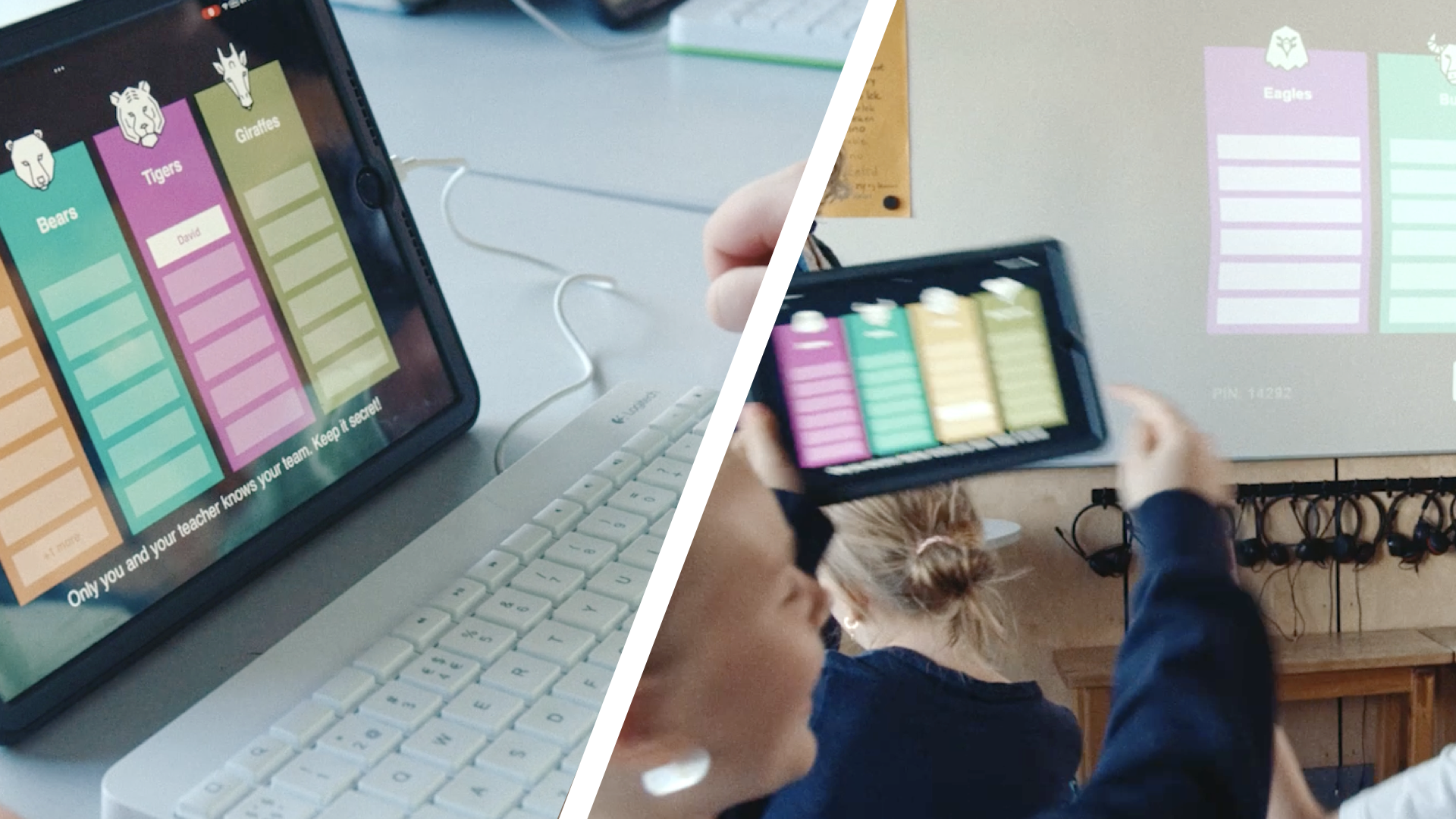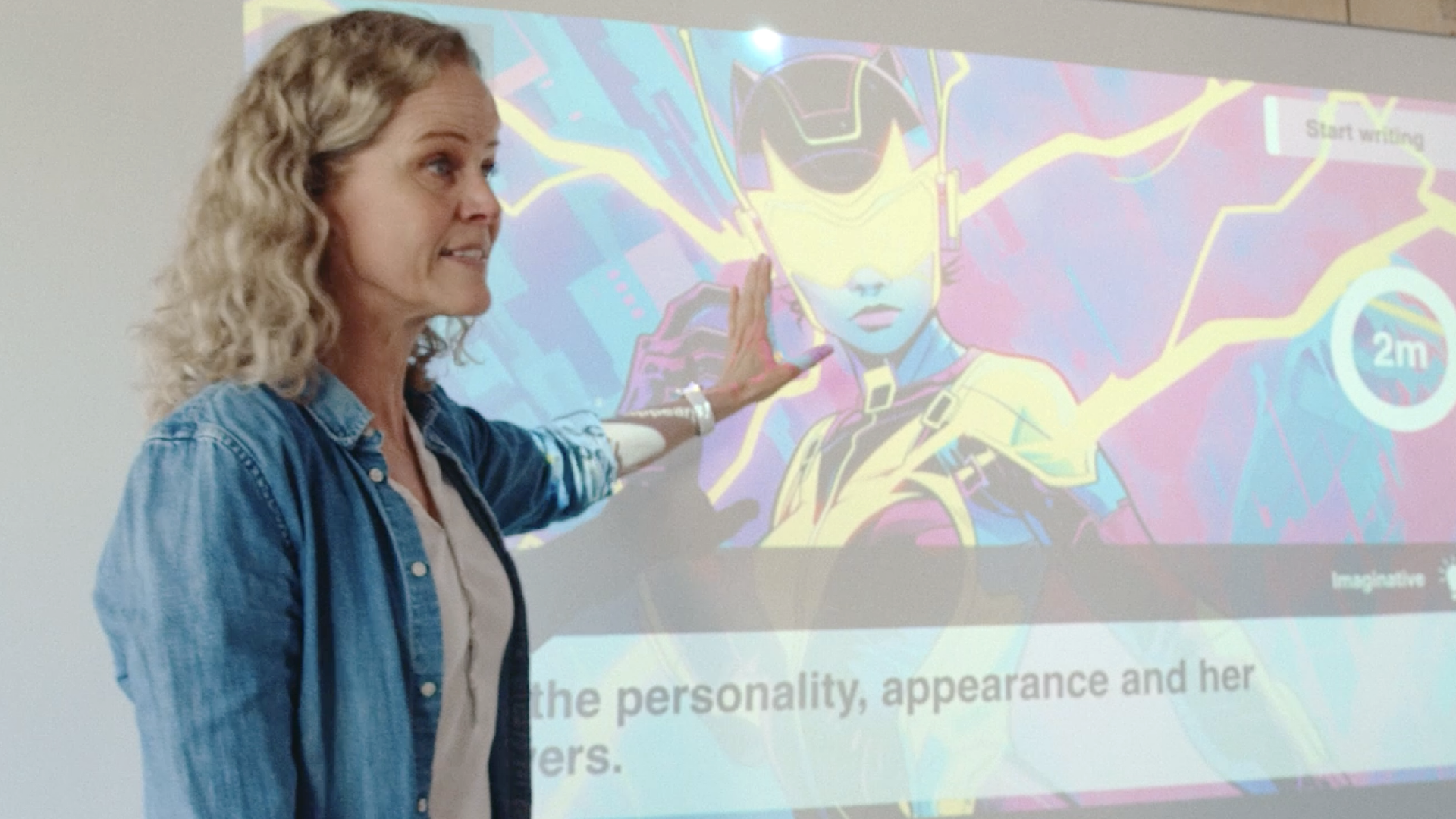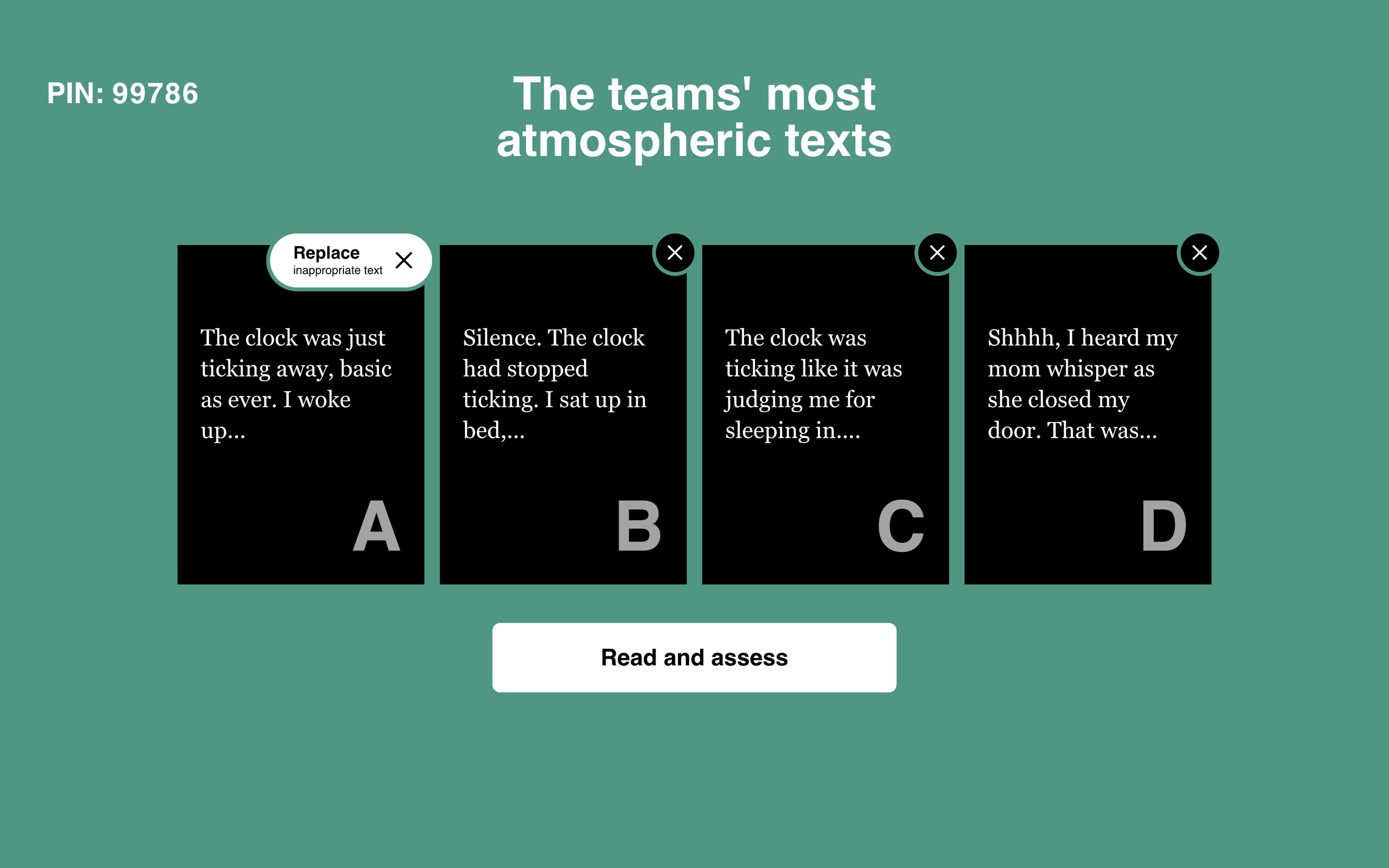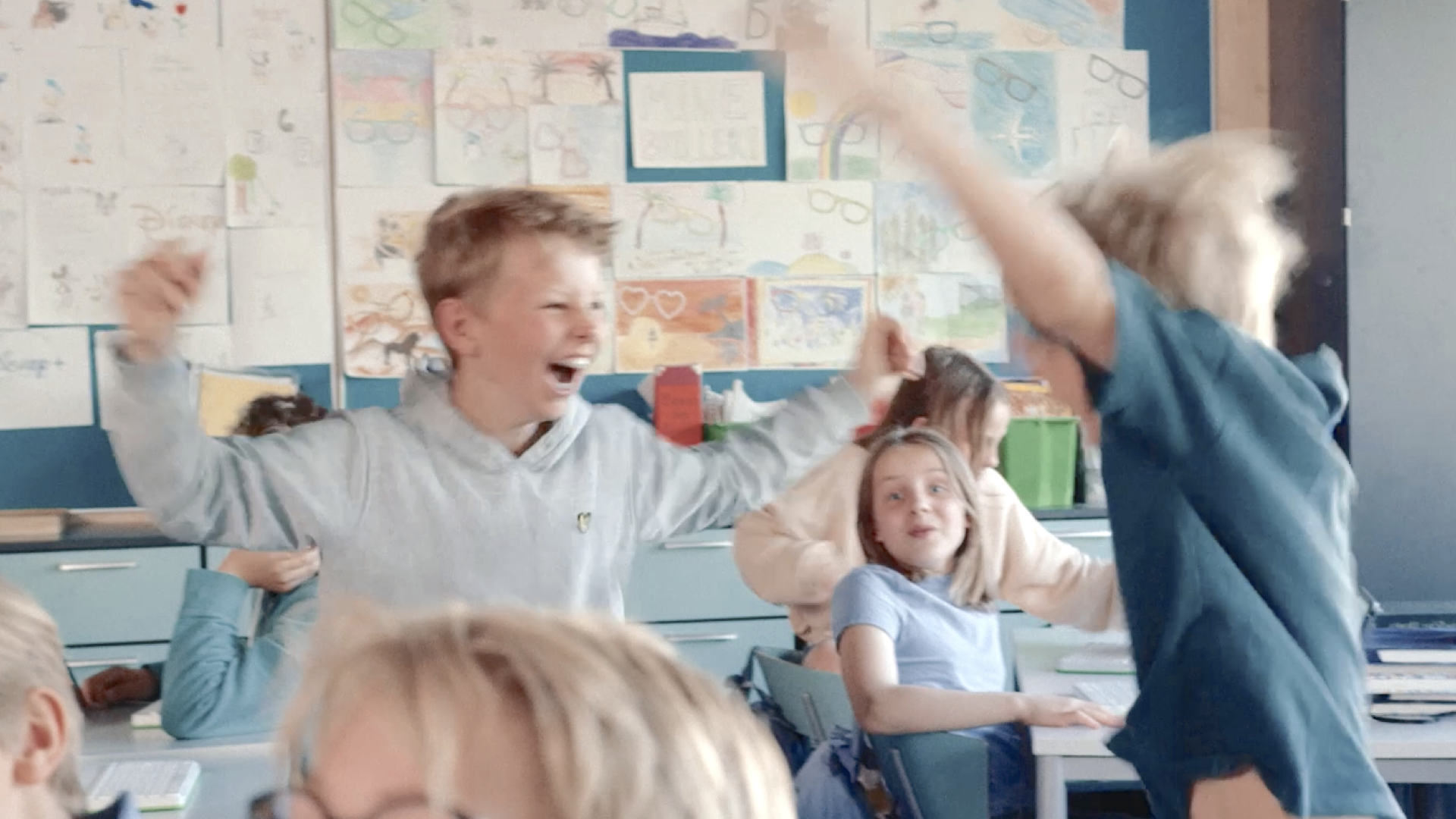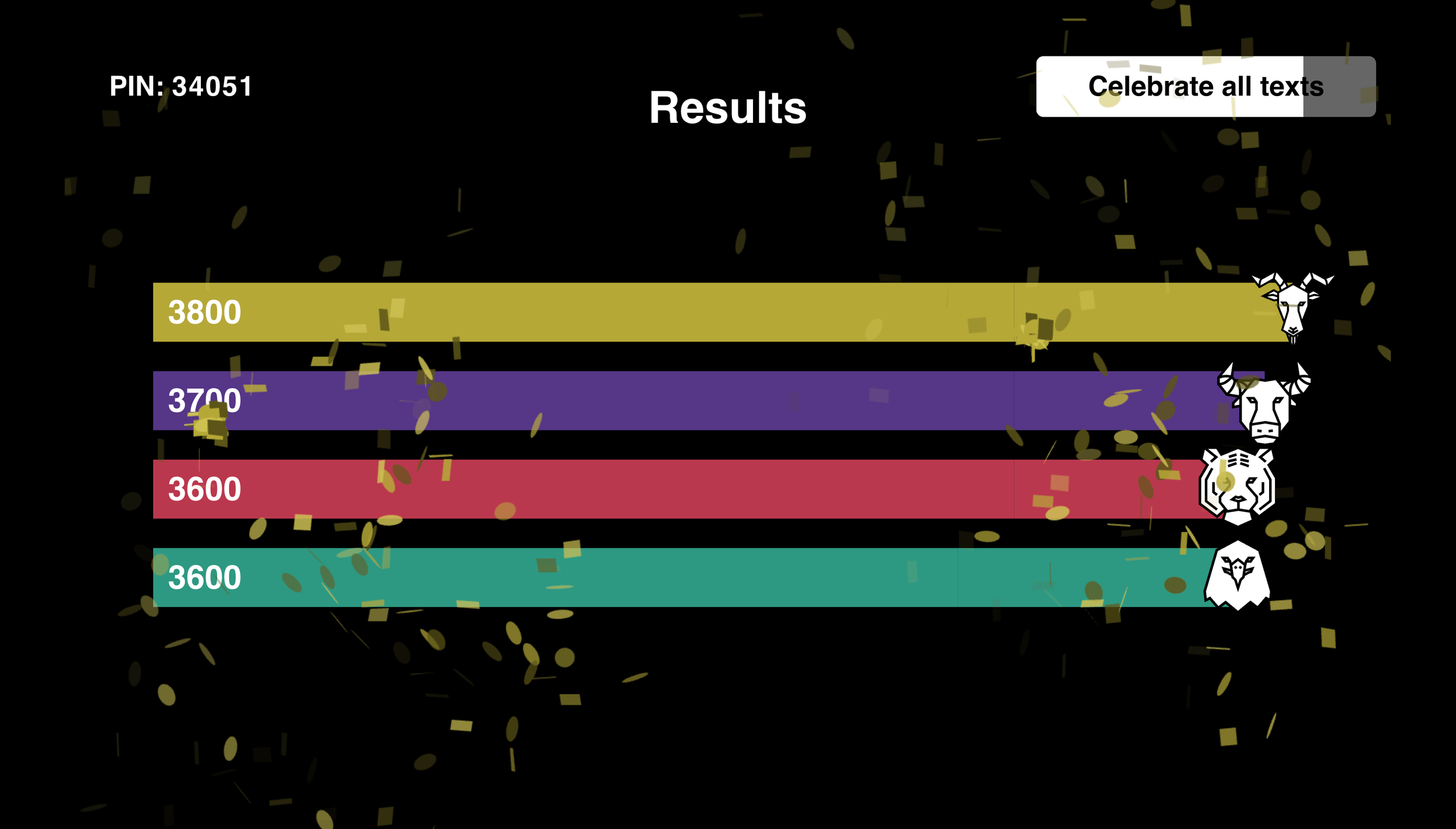How to Make the Most of WeWillWrite #2: Play
At the core of WeWillWrite is the engaging, interactive experience that brings writing to life in your classroom. In this post, you’ll see how you and your students can build a culture of excitement around writing, where everyone can learn from each other and grow together. As the teacher, you are the cornerstone of this experience, guiding your students as they explore, create, and share their ideas.
Time to engage your students!
Click “Play” on the set you’ve chosen, and you’re off and running. The first thing you’ll see is a modal asking if you want to play all challenges in the set. Sometimes, you might not have time to go through the entire set, so you can choose to play just part of it. If you choose fewer than the full number of challenges in the set, the last challenge(s) will be removed from the session. If you would like to choose specific challenges, you can click “Copy set” before pressing start to reorder, add, or remove challenges.
Tip! You can always play just part of a set if you’re short on time.
The Lobby
When you start a game, you’ll be taken to the lobby. Here, the classroom screen will display the PIN code and link that students will use to join the game.
Tip! Remind your students to use their real names the first time they play. This is also a good opportunity to mention that they shouldn’t use classmates’ names in their texts.
The first time students play, they’ll enter their names. While the writing competition is anonymous for students, you will you know who wrote each text once the game has concluded. Remind them to use their real names so you can track their progress, see how they’re participating, and identify if they need extra support. The game automatically filters out any texts that mention classmates’ names. Telling your students that you can see who wrote each text helps to create a safe environment where students are held accountable. This is also a great opportunity to discuss how freedom of expression comes with a responsibility to others, and why they should avoid using classmates’ names in their stories.
Tip! Keep the class atmosphere casual and emphasize the anonymous competition aspect, which encourages creativity and risk-taking!
Team Assignment
Once everyone has joined, you’re ready to start the game! Students will be randomly assigned to 3 or 4 teams, depending on the class size. Students will see which team they’re on, indicated by an animal symbol, but who’s on their team remains a secret. This phase usually sparks curiosity and excitement!
From this point on, the game runs on a timer that automatically moves you to the next phase. The exception is the final round, where you can take as much time as you need to explore the students’ texts together. If you want to move forward more quickly, you can always click the progress bar button in the top right corner.
Presenting the Challenge
Now it’s your turn to inspire your students! The task, image, writing prompt, time limit, and criterion will appear on the classroom screen. Present the task to your students. Explore and interpret the details of the image together to sow the seeds for some great ideas! This is your chance to use your talent as a guide and motivator. Be sure to remind them to focus on the criterion while they write.
You have one minute for this part. Based on thorough testing, we’ve found that this strikes a good balance between teacher guidance and keeping students engaged (even though it might feel a bit short for some teachers!).
Tip! This is your opportunity to drive curiosity—ask open-ended questions and encourage diverse interpretations.
On Your Marks, Get Set—Write!
During this phase, you’ll notice a unique focus in the room—an almost magical quiet accompanied by the sound of tapping keys as students immerse themselves in their writing.
Students’ screens during this phase will consist of a white text box to type in, surrounded by two help cards on either side. This layout provides guidance and support at every step, boosting participation and helping students feel more confident about their ideas. They have access to three types of support:
Tip cards
On the left side, students will find a tip card containing up to four sentence starters and guiding questions if they need a boost or feel stuck.
Team card
When students choose the “team card” with their team’s symbol on the right side, they’ll see the beginning of what their teammates are writing. Seeing another perspective often motivates students to bring their best ideas to the table and encourages healthy competition.
You!
Finally, the most powerful support system: you. Walk around, show curiosity, and offer encouragement. Your encouragement shows students that their ideas matter and that you’re there to support their creativity. Plus, it’s fun to peek at what they’re focusing so hard on!
Tip! Encourage students to use the tip cards if they need a little help to get started, stay on track, or come up with fresh ideas.
Tip! Get involved in the process and be curious. Walk around the classroom and make yourself available. Take a peek and encourage students if you see them writing something fun or interesting!
The challenges last between 2-4 minutes. When there are 20 seconds left, students will get a flashing signal. Once the time is up, they can rate how satisfied they were with the challenge, their process, and their final result.
Don’t be surprised if some students react when the time runs out—they might not have finished their text. That’s okay! It’s all about the process and the joy of writing. This is a sign of engagement!
Learning from Each Other: The Duel
Now it’s time for students to see what their teammates wrote! Each student gets two texts from their own team to read. The texts are distributed so that every student's writing is always read by two classmates. Depending on how much the class wrote, students have between 30 and 80 seconds to read the texts. In this duel, they’ll compare the texts based on the given criterion. After reading, they vote on which text best meets the criteria, such as most exciting, funny, atmospheric, imaginative, suspenseful, convincing, or interesting.
Tip! Remind students to compare the texts based on the given criterion.
This is a tool for building writing fluency, and we aim to encourage as much creative freedom as possible because we know it’s a key motivator. However, as with any creative activity, this can sometimes result in texts that may not be entirely appropriate or that push some boundaries.
Our filter works so that if a student writes something inappropriate or uses a classmate’s name, those texts won’t be eligible to be read. Instead, they’ll be replaced by other texts from the team. The student won’t be notified of this during the competition, but you can view it in the “Student texts” section afterward.
Learning from Each Other: The Finals
The excitement builds! The text from each team that gets the most votes will represent the team in the final round. Students will see on their screen which text from their team advanced. This is always exciting, and it’s completely normal to get a few reactions—another sign of their engagement!
Excerpts from each team’s text will now appear on the classroom screen. If a text passes through the filter but isn’t to your approval, you can simply hover over the “X” in the corner and click “Replace” to remove it from the competition. The text will then be replaced with the one that got the second most votes from that team.
Now it’s your chance to use your storytelling talent! Click “Read and assess” or an individual text excerpt, and the full text will appear on the screen. Your role is to share the stories to the class, bringing their ideas to life and showing enthusiasm for the potential of what they’ve written. Each text has a letter assigned to it for easy voting, and it can be helpful to point these out as you read.
Tip! Immerse yourself in the texts, treating them with the same intrigue and respect as you would any author’s work. This positive reinforcement evens the playing field and builds confidence in all your young writers!
Each text will display with the assistance of our AI-powered classroom support tool, which highlights the literary devices and writing techniques in their work. These elements appear as buttons beneath the text, which you can click to reveal exactly where the technique is used. This creates a dynamic way to engage with the writing process, supporting your teaching and promoting an inducting learning method which turns students’ own examples into teachable moments on writing concepts.
While AI will never replace the personal impact you bring to the classroom, it can enhance the writing experience by providing positive reinforcement. For a young writer, seeing their own examples highlighted according to academic criteria is a tremendous confidence boost. By acknowledging these highlights, it further validates their progress and encourages a positive attitude toward writing as a skill they can master and enjoy.
Tip! Encourage open discussions around the texts with the class.
Now comes the exciting conclusion—it’s time for your students to decide which team’s work will earn the top spot! With the final votes about to be cast, anticipation fills the room. When you’re ready, click the button in the top right corner to start the voting process. As the votes are tallied, points will be awarded to each team, and a breakdown will be shown of the team standings and points awarded so far. This is often when you’ll see reactions in the classroom—the excitement of competition really comes to life!
Conclusion and Celebration
Once the points are awarded, the game moves on to the next challenge in the set. When all challenges are completed, the game is over, and the team with the most points wins! At the very end, a scrolling screen will show all the texts students contributed. It’s exciting for students to spot their own text, and it’s common for them to point it out with enthusiasm!
You’ll see a brief summary of some stats from the game you just played, like the number of words written, total number of texts, how many students wrote more than one text, and how satisfied they were with the tasks. You can scroll through the texts as long as you’d like, highlighting the efforts of those whose texts didn't make it to the finals this time around.
Tip! Feel free to use the final stats screen and the scrolling texts as a celebration of how much you’ve accomplished together!



